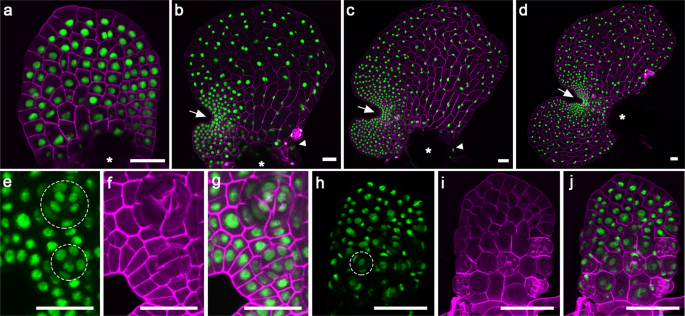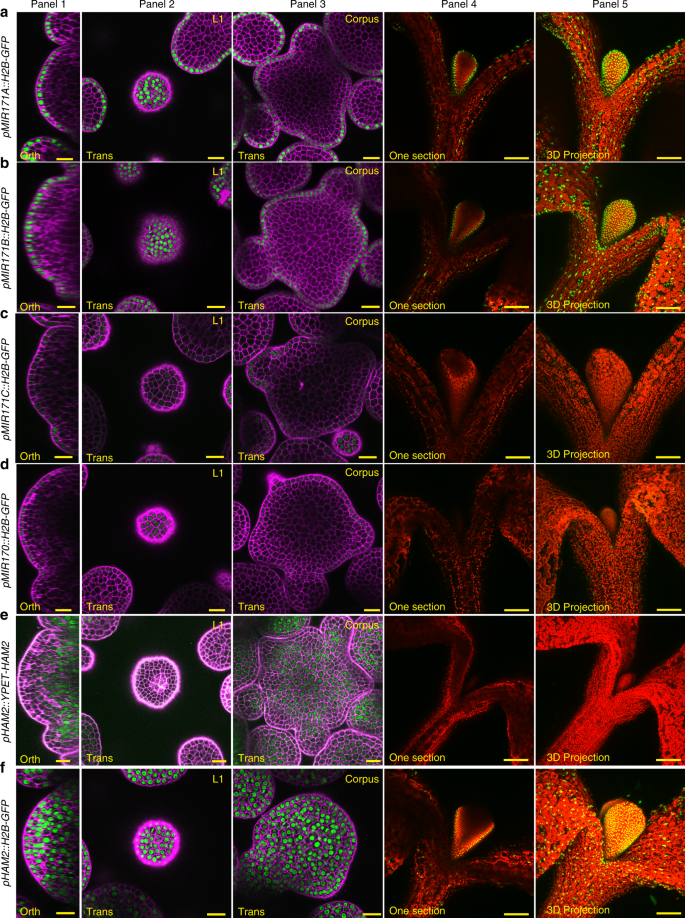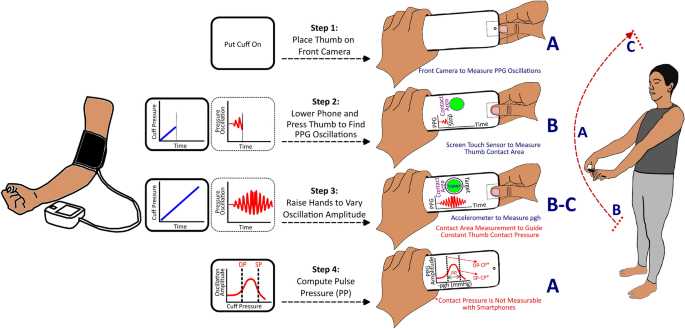2024-09-12 パデュー大学
<関連情報>
- https://ag.purdue.edu/news/2024/09/purdue-team-unravels-regulatory-mechanism-that-prevents-stem-cell-differentiation-and-maintains-gender-balance-in-vascular-plants.html
- https://www.cell.com/current-biology/abstract/S0960-9822(24)00848-0
- https://www.nature.com/articles/s42003-022-03627-y
- https://www.nature.com/articles/s41467-020-14989-4
GRASドメインに保存された転写制御因子が、セラトプテリス配偶体の分裂期の不定性と性決定を結びつける A conserved GRAS-domain transcriptional regulator links meristem indeterminacy to sex determination in Ceratopteris gametophytes
Yuan Geng∙ Chong Xie∙ An Yan∙ … ∙ Dinh Nhan Lai∙ Xing Liu∙ Yun Zhou
Current Biology Published:July 25, 2024
DOI:https://doi.org/10.1016/j.cub.2024.06.064
Graphical abstract
Highlights
•CrHAM differentially accumulates in Ceratopteris hermaphrodites and males
•CrHAM maintains meristem indeterminacy and cell division in hermaphrodites
•CrHAM suppresses antheridiogen-mediated male differentiation, affecting sex ratio
•miR171 represses CrHAM during gametophyte development in Ceratopteris
Summary
Most land plants alternate between generations of sexual gametophytes and asexual sporophytes. Unlike seed plants, fern gametophytes are free living and grow independently of their sporophytes. In homosporous ferns such as Ceratopteris, gametophytes derived from genetically identical spores exhibit sexual dimorphism, developing as either males or hermaphrodites. Males lack meristems and promote cell differentiation into sperm-producing antheridia. In contrast, hermaphrodites initiate multicellular meristems that stay undifferentiated, sustain cell division and prothallus expansion, and drive the formation of egg-producing archegonia. Once initiating the meristem, hermaphrodites secrete the pheromone antheridiogen, which triggers neighboring slower-growing gametophytes to develop as males, while the hermaphrodites themselves remain insensitive to antheridiogen. This strategy promotes outcrossing and prevents all individuals in the colony from becoming males. This study reveals that an evolutionarily conserved GRAS-domain transcriptional regulator (CrHAM), directly repressed by Ceratopteris microRNA171 (CrmiR171), promotes meristem development in Ceratopteris gametophytes and determines the male-to-hermaphrodite ratio in the colony. CrHAM preferentially accumulates within the meristems of hermaphrodites but is excluded from differentiated antheridia. CrHAM sustains meristem proliferation and cell division through conserved hormone pathways. In the meantime, CrHAM inhibits the antheridiogen-induced conversion of hermaphrodites to males by suppressing the male program expression and preventing meristem cells from differentiating into sperm-producing antheridia. This finding establishes a connection between meristem indeterminacy and sex determination in ferns, suggesting both conserved and diversified roles of meristem regulators in land plants.
セラ トプテリス配偶体におけるメリステムの発達とアルケゴニウム形成は、位置的な手がかりと細胞分裂のダイナミクスによって駆動される Positional cues and cell division dynamics drive meristem development and archegonium formation in Ceratopteris gametophytes
Yuan Geng,An Yan & Yun Zhou
Communications Biology Published:01 July 2022
DOI:https://doi.org/10.1038/s42003-022-03627-y

Abstract
Fern gametophytes are autotrophic and independent of sporophytes, and they develop pluripotent meristems that drive prothallus development and sexual reproduction. To reveal cellular dynamics during meristem development in fern gametophytes, we performed long-term time-lapse imaging and determined the real-time lineage, identity and division activity of each single cell from meristem initiation to establishment in gametophytes of the fern Ceratopteris richardii. Our results demonstrate that in Ceratopteris gametophytes, only a few cell lineages originated from the marginal layer contribute to meristem initiation and proliferation, and the meristem lacks a distinguishable central zone or apical cell with low division activity. Within the meristem, cell division is independent of cell lineages and cells at the marginal layer are more actively dividing than inner cells. Furthermore, the meristem triggers differentiation of adjacent cells into egg-producing archegonia in a position-dependent manner. These findings advance the understanding of diversified meristem and gametophyte development in land plants.
表皮に由来するシグナルカスケードがシロイヌナズナのシュート先端分裂組織の先端-基部パターニングを規定する A signal cascade originated from epidermis defines apical-basal patterning of Arabidopsis shoot apical meristems
Han Han,An Yan,Lihong Li,Yingfang Zhu,Bill Feng,Xing Liu & Yun Zhou
Nature Communications Published:05 March 2020
DOI:https://doi.org/10.1038/s41467-020-14989-4

Abstract
In multicellular organisms, a long-standing question is how spatial patterns of distinct cell types are initiated and maintained during continuous cell division and proliferation. Along the vertical axis of plant shoot apical meristems (SAMs), stem cells are located at the top while cells specifying the stem cells are located more basally, forming a robust apical-basal pattern. We previously found that in Arabidopsis SAMs, the HAIRY MERISTEM (HAM) family transcription factors form a concentration gradient from the epidermis to the interior cell layers, and this gradient is essential for the stem cell specification and the apical-basal patterning of the SAMs. Here, we uncover that epidermis specific transcription factors, ARABIDOPSIS THALIANA MERISTEM LAYER 1 (ATML1) and its close homolog, define the concentration gradient of HAM in the SAM through activating a group of microRNAs. This study provides a molecular framework linking the epidermis-derived signal to the stem cell homeostasis in plants.



